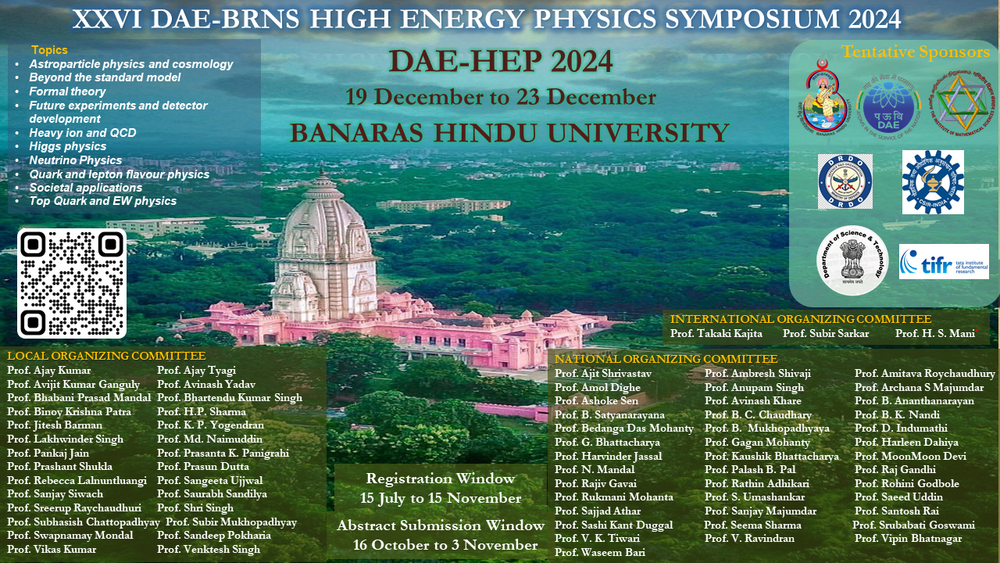Speaker
Description
One of the primary objectives of high-energy nuclear collisions is to investigate the phase structure of strongly interacting nuclear matter and understand the Quantum Chromodynamics (QCD) phase diagram. This diagram is mapped by temperature (T) and baryon chemical potential ($\mu_{B}$). Lattice QCD calculations at zero $\mu_{B}$ predict a smooth crossover between the hadronic phase and the Quark Gluon Plasma (QGP) phase. A critical point is expected to mark the boundary between the first-order phase transition and the crossover region. Event-by-event fluctuations in nuclear collisions allow us to probe the correlation length ($\xi$) of the system, which captures how variables change together over space and time. Near a critical point, this correlation length becomes significant, even diverging in an infinite system, making fluctuation measurements a powerful tool in the search for the QCD critical point. Fluctuations of conserved quantities like net-baryon (B), net-charge (Q), and net- strangeness (S) are key observables in the search for the QCD phase transition and the critical point. The Compressed Baryonic Matter (CBM) experiment at FAIR, Darmstadt, offers a unique opportunity to study the model-predicted first-order phase transition from hadronic matter to QGP with high precision by using its exceptionally high collision rates of up to 10 MHz, far surpassing previous experiments.
In this work, we present the results on net-kaon fluctuations for Au+Au collisions in the range of collision energy 3.5-19.6 GeV using the newly developed Parton-Hadron-Quantum-Molecular- Dynamics (PHQMD) model [1]. This study provides novel insights into net-kaon fluctuation behavior within the CBM energy range. The results have been compared with those obtained using the acceptance of Solenoidal Tracker at RHIC (STAR) experiment. PHQMD is a versatile model for studying heavy-ion collisions and cluster formation across diverse energies, integrating Parton- Hadron-String-Dynamics (PHSD) for QGP interactions and Quantum Molecular Dynamics (QMD) for baryon dynamics. These clusters form through dynamic potential interactions, with regions above 0.5 GeV/$fm^{3}$ knowing as the QGP phase where hadrons dissolve into quarks and gluons.
Our findings will help to establish a baseline for understanding net-kaon and net-strangeness fluctuations, which are crucial for probing potential critical behaviors near the critical end point in the CBM energy range.
Ref: 1. J. Aichelin et al., Phys. Rev. C 101 4, 044905 (2020)
| Field of contribution | Phenomenology |
|---|

